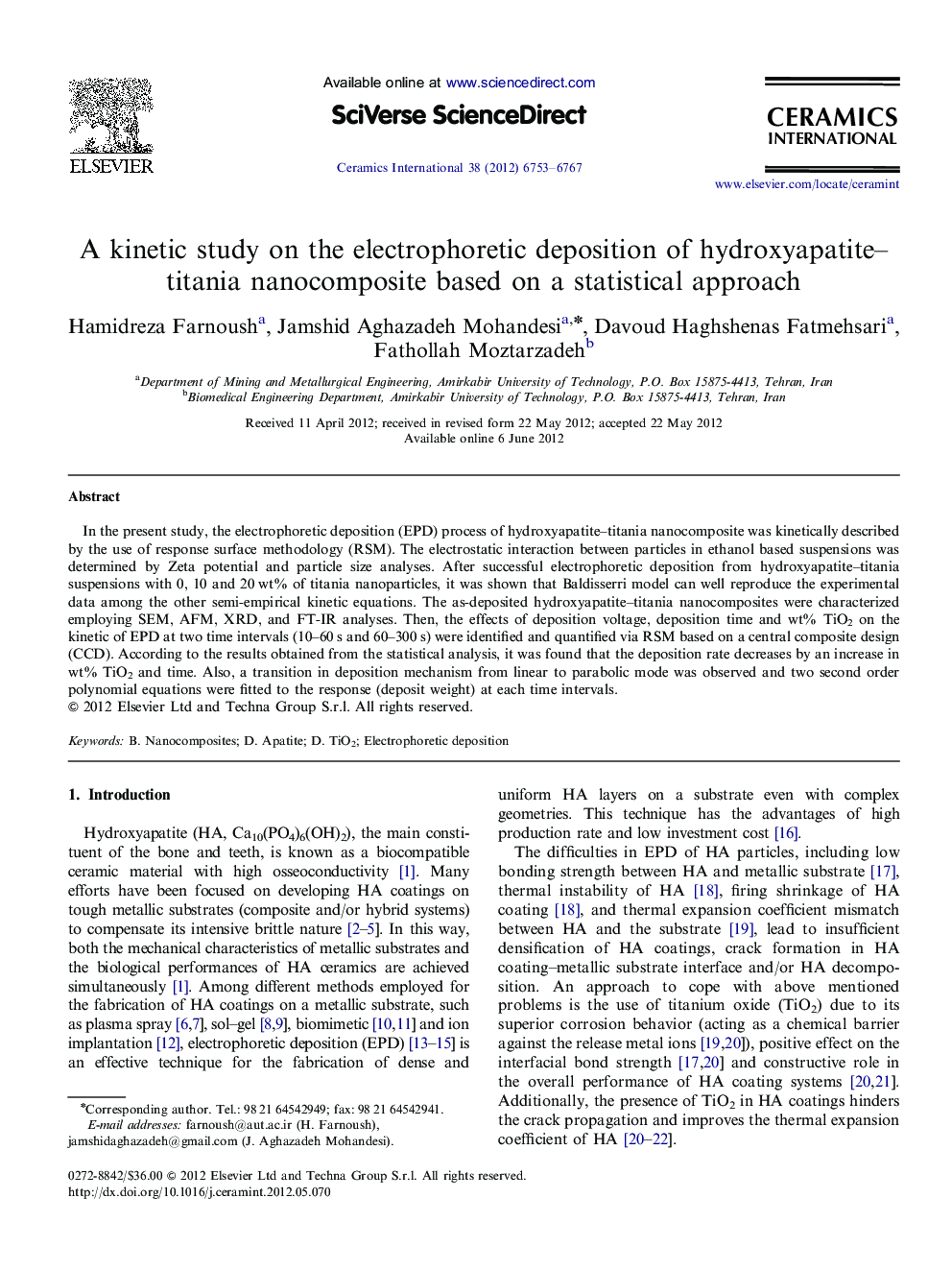| Article ID | Journal | Published Year | Pages | File Type |
|---|---|---|---|---|
| 1462454 | Ceramics International | 2012 | 15 Pages |
In the present study, the electrophoretic deposition (EPD) process of hydroxyapatite–titania nanocomposite was kinetically described by the use of response surface methodology (RSM). The electrostatic interaction between particles in ethanol based suspensions was determined by Zeta potential and particle size analyses. After successful electrophoretic deposition from hydroxyapatite–titania suspensions with 0, 10 and 20 wt% of titania nanoparticles, it was shown that Baldisserri model can well reproduce the experimental data among the other semi-empirical kinetic equations. The as-deposited hydroxyapatite–titania nanocomposites were characterized employing SEM, AFM, XRD, and FT-IR analyses. Then, the effects of deposition voltage, deposition time and wt% TiO2 on the kinetic of EPD at two time intervals (10–60 s and 60–300 s) were identified and quantified via RSM based on a central composite design (CCD). According to the results obtained from the statistical analysis, it was found that the deposition rate decreases by an increase in wt% TiO2 and time. Also, a transition in deposition mechanism from linear to parabolic mode was observed and two second order polynomial equations were fitted to the response (deposit weight) at each time intervals.
